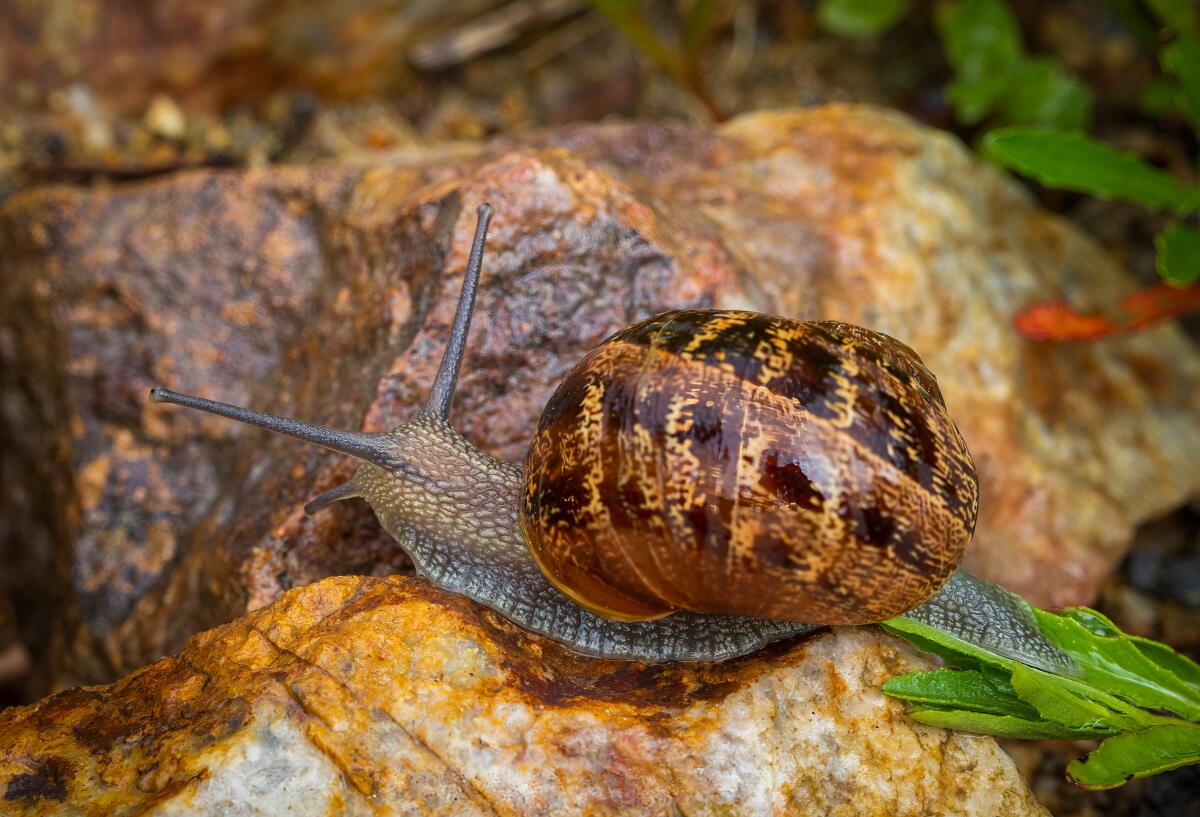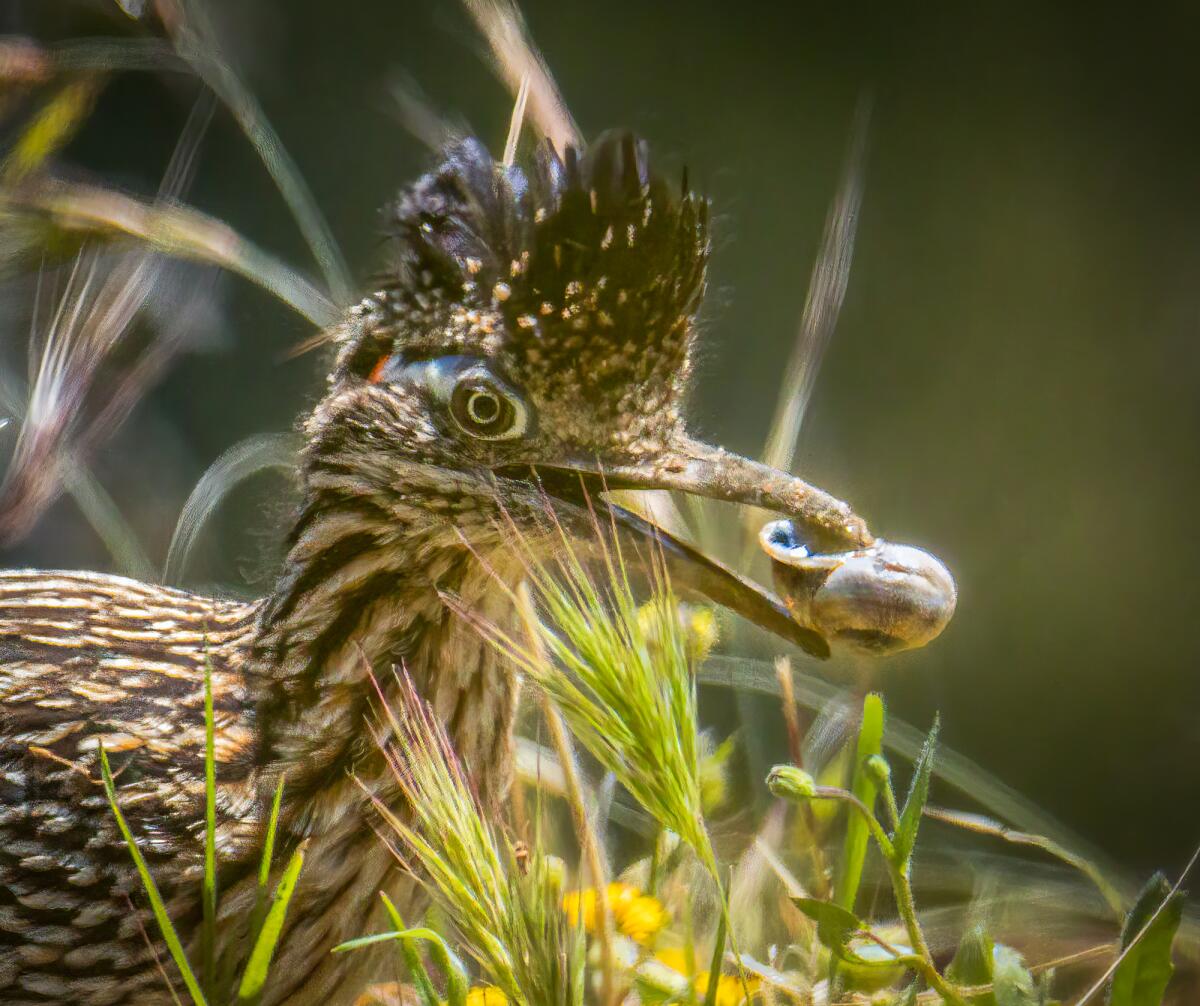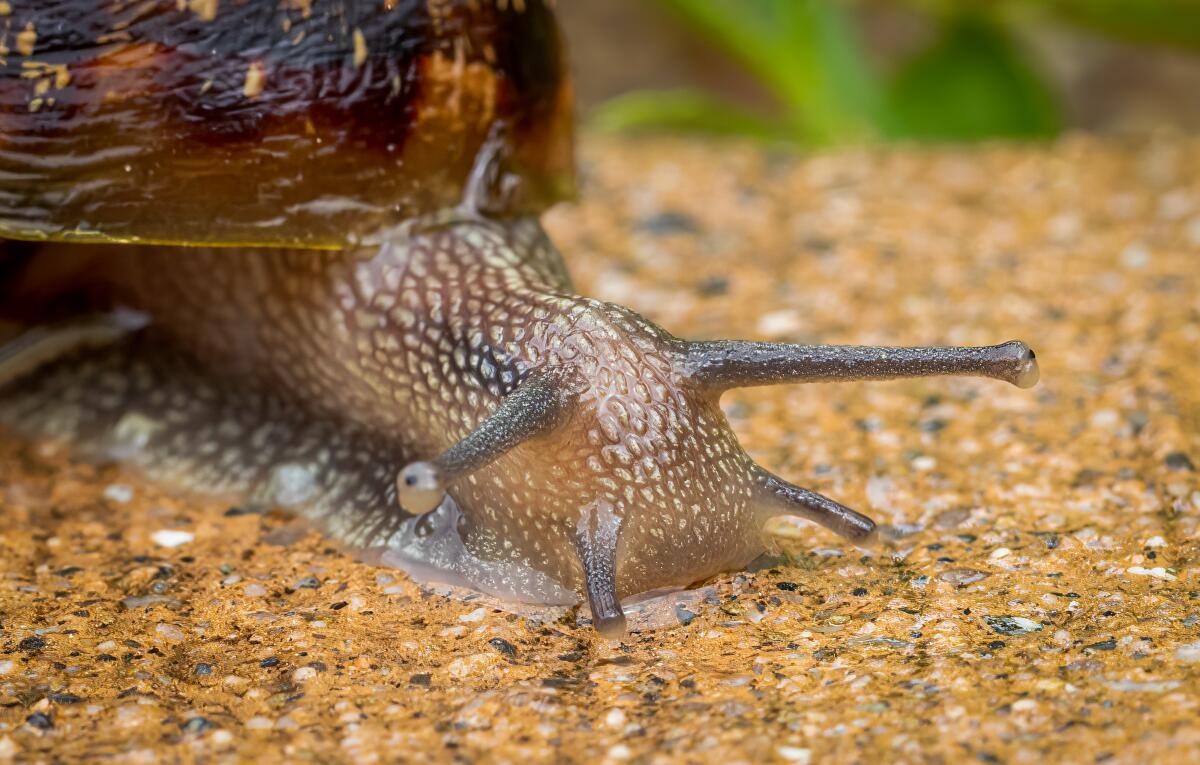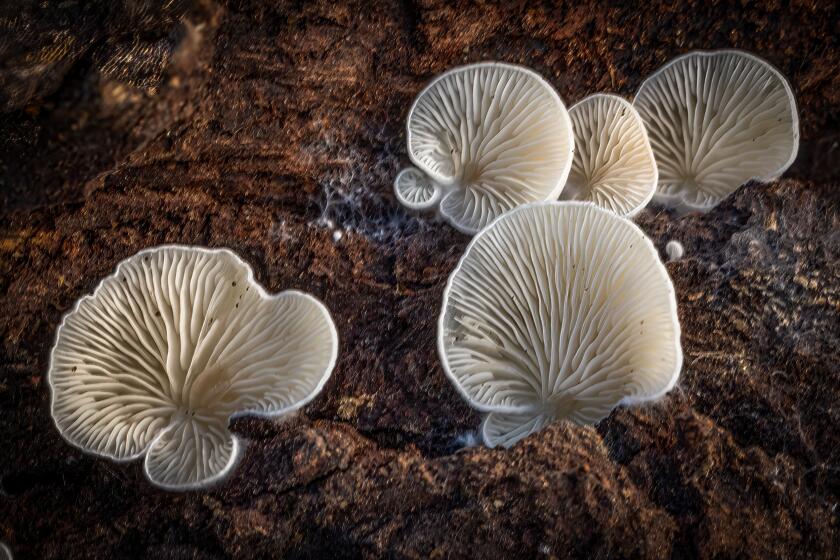Column: Snails may have figured out the perfect pace for life

Ernie Cowan’s Outdoors column
Think of a world where your travels are measured in inches rather than miles per hour.
This is a story about snails.
It took me quite a while to write.
Life slows down, it seems, when you spend time watching snails. Call it a terrestrial version of an aquarium.
Like the sluggish motion of a snail, my interest in these garden mollusks grew slowly.
Leaving the house on a sunny morning, I had noticed a network of silvery squiggles on the sidewalk but hadn’t given it much thought until I spotted a snail parked in the middle of the sidewalk at the end of his squiggly path.
Why had the snail chosen this spot to stop for the day?
A few days later I noticed several snails crossing our country road as I walked in morning fog.
I realized the damp conditions were ideal for the snails that travel with their version of a self-contained camper van on their back.
As I returned, they had continued their dangerous journey across the exposed surface of the street, but speed was certainly not their thing.

Perhaps they were told to never run across the street?
Scientists have discovered that a snail’s pace is slow, averaging a blazing rate of about 40 inches per hour.
The more I learned, the more fascinated I became with these interesting creatures that can live for up to five years in the wild. I learned a lot, just lying on the ground and watching them.
While native to the Mediterranean region, the garden snail is now found throughout the world on all continents except Antarctica.
They likely arrived here while hidden in shipments of vegetables or other plants.
In many agricultural areas they are considered pests, and I am sure many local gardeners feel the same way since snails love the tender parts of young plants and leafy green vegetables, carrots, corn, potatoes and peppers.
But the reality is, they are here and have become part of our ecological fabric, providing food for a variety of wild creatures, including birds, rodents, fish, toads, crabs and insects.

I have often watched our Mt. Hoo roadrunners foraging in the thickets of a sumac bush and emerging with a snail that they break open by pounding on a rock.
Some humans also love eating snails prepared in a garlic butter, but don’t pluck them right from your garden and do that without purging them for a few days to make sure they have not been feeding on plants containing anything harmful such as pesticides, fertilizers or bad pathogens.
There are plenty of online guides on how to prepare garden snails to eat.
So, what about those silvery little snail tracks often seen in the morning on our sidewalks?
Consider those the footprints of the snail. The large, exposed base of the snail is the foot, and they move around by producing mucus that helps them slide over all kinds of surfaces from rough rocks to plants and soil. This mucus is what leaves the telltale track.
Snails do not shed their shells, but produce calcium during their life that allows the shell to expand as they grow larger.
These are generally nocturnal creatures, most active in high humidity or during damp periods. They will become active during the day when it rains.
During drought or heat, the snail will retract into its shell and seal the opening with mucus that dries and seals in moisture as well as protects from small predators such as ants. That’s likely why one of my snails was parked in the middle of the sidewalk on a warm morning.
Snails are known as hermaphrodites, which means they have both male and female reproductive organs.
While they can produce and fertilize their own eggs, they frequently pair with another snail for fertilization that results in around 85 eggs that are deposited in a shallow nest gouged into the soil.
Tiny snails emerge in about two weeks during warmer periods.
Is it weird to say that after spending time watching snails and learning about them, I have come to like them?
I mean, have you ever had a face-to-face conversation with a snail? They seem curious, with their four tentacles that always seem busy keeping track of things around them.

The top, longer tentacles have eyes. While chatting, I notice they could turn their eyes in every direction to see what was going on around them.
Their lower tentacles are near the mouth with sensors to help identify food and objects they contact.
I was surprised to learn that many people keep snails as pets, since they are quiet, easy to care for and don’t bite. A small glass or plastic aquarium can be a great snail enclosure for youngsters learning about nature.
There are kits available online and at pet shops with all you would need to create a snail terrarium.
It must be snail hatching season. I notice them now, and realize I have hundreds of tiny ones about the size of a pea all over Mt. Hoo.
I’m off for my morning walk. It could take me a while.
Cowan is a freelance columnist. Email ernie@packtrain.com or visit erniesoutdoors.blogspot.com.
Get Essential San Diego, weekday mornings
Get top headlines from the Union-Tribune in your inbox weekday mornings, including top news, local, sports, business, entertainment and opinion.
You may occasionally receive promotional content from the San Diego Union-Tribune.









